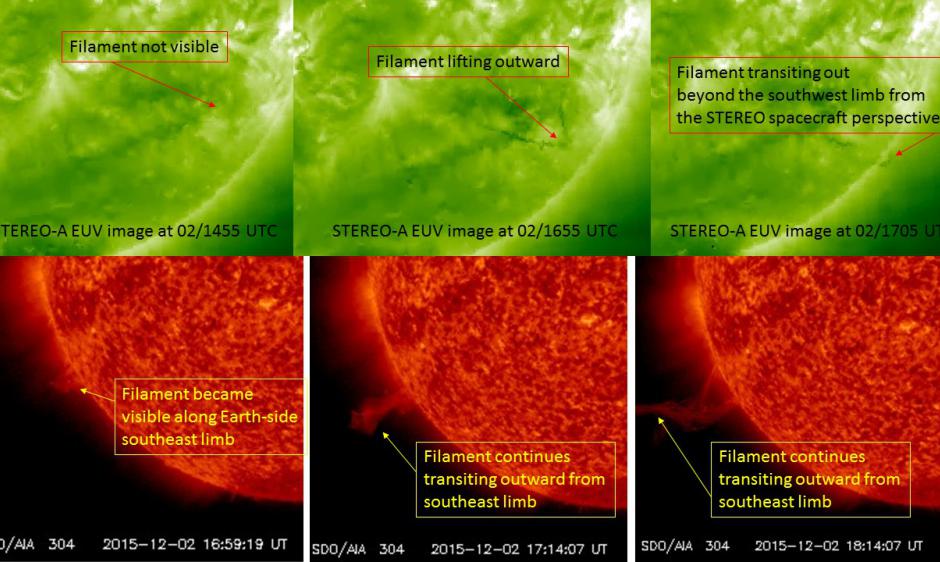
An eruptive prominence from the southeast limb (EPL) was observed on December 2nd between approximately 1659 to 1900 UTC (1159-1400 ET). The EPL was noted in SDO/AIA-304 imagery from its inclined geosynchronous orbit near Earth [as seen in the orange imagery noted in the accompanying graphic]. The EPL was also captured by NASA's STEREO-Ahead spacecraft in its orbit just behind and to the east of the Sun. The STEREO images clearly show a filament erupting outward from the far-side of the Sun. Additionally, the SOHO spacecraft also captured an associated coronal mass ejection (CME) in its LASCO-C3, coronagraph imagery traveling outward along a southeast vector from its orbital position between the Earth and the Sun. Due to the filament's eruption from the far-side of the Sun, the associated CME is not Earth-directed. However, this activity is a good example of how SWPC forecasters utilize different sources of data in order to make the most accurate analysis and forecast possible.